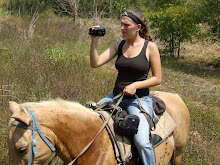I liked this article. While some of the things that were discussed seemed kind of like ..duhh.. to me, other points were things that i've never considered before, or technical things i didn't even know. I felt that I could definitely relate to the feeling of playing a film without sound. As an editor, I enjoy placing all the visuals together before I start with the soundtrack, but no matter how much I like the visual sequences that I create, there is nothing more satisfying than adding the "explosion" sound effect, or the perfect tune that you have been impatiently waiting to add throughout the entire visual cut. I don't think that this means the images are worthless without sound, but even in the silent era, there has always been a need for sound to accompany a film.
I thought the difference that was brought up between empathetic and anempathetic music was very interesting. Everyone can recognize how much empathetic sound/music can have an effect on the audiences emotional response to whatever is happening in the film, but I never considered sounds such as the shower continuing to run in Psycho as its own category, with its own effect on my response as well.
The technical differences between the recognition of seeing and hearing was pretty cool, but I don't think I'd ever use that to make short cuts in a film as the article claims was done in Star Wars. That just seems like a stupid thing to do, since they already had the footage they needed to actually show the door open. However, I did agree with the three ways that sound can temporalize an image, and I find it to be a very useful and successful technique in film.
Wednesday, February 17, 2010
Subscribe to:
Post Comments (Atom)

No comments:
Post a Comment